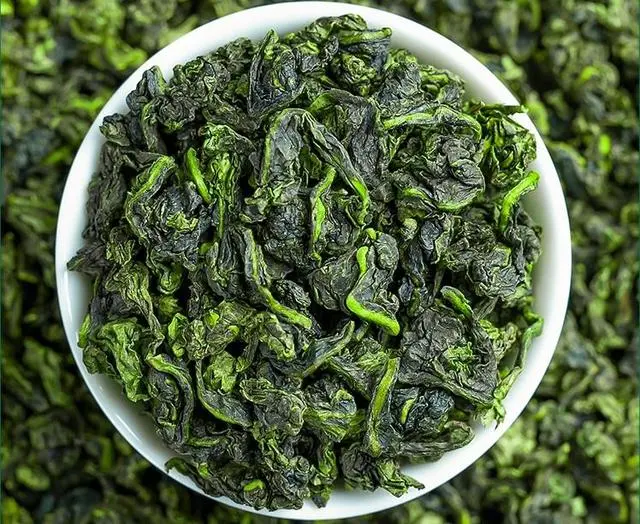Tea originated in China. Since ancient times, Chinese people have always had the custom of drinking tea. As the saying goes, there are seven necessities in daily life: “firewood, rice, oil, salt, soy sauce, vinegar and tea”, among which “tea” is included. For people with the habit of drinking tea, tea is not an dispensable drink. This hot drink with a delicate fragrance has long become a part of life.
After thousands of years of meticulous cultivation, breeding and the development of production techniques, tea has formed six major categories consisting of green tea, black tea, oolong tea, dark tea, yellow tea and white tea. Under each major category, there are many detailed classifications. With continuous innovation, the varieties of tea are countless. Today, we mainly introduce oolong tea.
Oolong tea, also known as Qingcha, is one of the unique tea varieties in China and originated from Fujian Province. It was introduced from Fujian to Taiwan and Guangdong. Up to now, the main production areas are distributed in the three provinces of Fujian, Guangdong and Taiwan. Oolong tea has a unique aroma, featuring the natural fragrance of flowers and fruits as well as the special aroma of the variety. It is the result of the comprehensive effect of a specific ecology, fine varieties and meticulous processing techniques.
Oolong tea belongs to the semi-fermented tea category and is processed through procedures such as plucking, sun-drying, air-drying, rocking, pan-frying, twisting and baking. Due to its semi-fermented nature, oolong tea has a unique taste, combining the natural fragrance of green tea and the rich sweetness of black tea. It is a tea category with distinct characteristics unique to China. According to different production areas and quality styles, it can be classified as oolong tea from northern Fujian, southern Fujian, Guangdong and Taiwan. Wuyi Rock Tea, Anxi Tieguanyin, Fenghuang Dancong and Dongding Oolong are classic tea products corresponding to the above four regions respectively.
Next, let’s take a look at the main varieties of oolong tea together.
1. Fenghuang Dancong
Fenghuang Dancong tea is a specialty of Chaozhou, Guangdong Province. It comes from Fenghuang Town and is named after the local Fenghuang Mountain, featuring a unique mountain charm and floral fragrance. The tea leaves of Fenghuang Dancong are thick, tight-knit, with a yellowish-brown and oily color. The aroma is noble and long-lasting, and the taste is fresh, sweet and with a lingering aftertaste. To improve the quality of the tea, the tea leaves in Fenghuang Town are picked, processed and sold individually for each plant. Tens of thousands of ancient tea trees all adopt this method, and it was anciently called Fenghuang Dancong tea. The finished Fenghuang Dancong tea has the elegant title of the “four wonders” of beautiful shape, emerald color, rich fragrance and sweet taste. It is basically semi-fermented oolong tea. There are currently more than 80 strains with various flavors, such as the fragrances of mountain eggplant leaves, pomelo leaves, honey orchid, yellow gardenia and orchid, etc., which are never tiresome to drink. After brewing, the tea soup is yellow and bright with a greenish tint, and the aroma is high. Many tea varieties have an elegant and noble floral fragrance. It is sweet, refreshing and with a lingering aftertaste. Moreover, it is very resistant to brewing and has a unique “mountain charm”.
2. Anxi Tieguanyin
The widely popular Anxi Tieguanyin is a representative of southern Fujian oolong tea and is deeply loved by seasoned tea enthusiasts. The tea production in Anxi began in the late Tang Dynasty. According to records, during the Song and Yuan Dynasties, farmers in the Anxi area had widely produced tea. The Anxi area is surrounded by mountains, shrouded in clouds and mist, with an annual average temperature of 15-18 degrees Celsius. The deep acidic red soil and the unique geographical location are particularly suitable for the growth of tea trees. Besides Tieguanyin, Huangjingui and Yongchun Buddha’s Hand are also high-quality varieties of southern Fujian oolong. Anxi Tieguanyin is the finest of oolong tea and widely popular. The tea leaves are curly, plump and round, some shaped like a weighing hook and some like a dragonfly’s head. With the evaporation of moisture, caffeine forms a layer of white frost, known as “sandy green with frost”.
Ancient times witnessed the saying, “Before tasting the nectar flavor, the divine and wonderful fragrance is perceived first.” After brewing, Tieguanyin emits an extraordinary and lasting aroma that intoxicates and delights the mind. The tea soup is golden-yellow and limpid. When the tea leaves unfurl, they are thick, lustrous and bright, with a sheen like that of satin. The entrance is fragrant, and there is a sweet aftertaste at the back of the throat, featuring a unique “Guanyin charm”. Moreover, it is highly resistant to brewing, and even after seven infusions, a lingering fragrance remains.
3. Wuyi Dahongpao
Wuyi Rock Tea is a renowned oolong tea both at home and abroad. It is produced near the Wuyi Mountain Scenic Area, covering an area of approximately 70 kilometers. It belongs to a typical Danxia landform where clouds and fog tend to gather and disperse slowly, resulting in high air humidity. Wuyi Rock Tea has a unique “rock charm”. There are a wide variety of tea tree species. Due to the unique geographical and climatic conditions, even the same type of tea tree can mutate in different locations. There is even a saying that “Each rock has its own tea, and each tea has its own name”.
Da Hong Pao is the premier among the “Four Famous Bushes” of Wuyi Rock Tea, boasting the highest quality and the greatest reputation. It enjoys the reputation of the “King of Tea”. Da Hong Pao has tight and knotty tea leaves, with a fresh and lustrous greenish-brown color. After brewing, the tea soup is clear and splendid, presenting a deep orange color. The entrance has a distinct “rock charm”, with a mellow, sweet and refreshing taste. The fragrance lingers at the bottom of the cup, with a rich, long and profound aroma. Under a hint of the smoky flavor, there are also successive waves of floral and fruity fragrances.
Oolong tea is rich in nutrients, mainly including polyphenols, proteins, amino acids, vitamins, organic acids, sugars, enzymes, alkaloids, etc. It also contains minerals such as magnesium, zinc, and copper.
Oolong tea has various efficacy and functions, including but not limited to the following aspects:
1. Weight loss: It helps promote fat metabolism and reduce fat absorption, thereby assisting in weight control.
2. Anti-oxidation: Components such as tea polyphenols have anti-oxidant effects, can eliminate free radicals, and delay cell aging.
3. Lowering blood lipids: It helps lower cholesterol and triglyceride levels in the blood and prevent cardiovascular diseases. 4. Refresh the mind: The caffeine it contains can stimulate the central nervous system, improve thinking ability and work efficiency.
5. Improve digestion: It promotes gastrointestinal peristalsis, aids digestion, and alleviates problems such as indigestion and stomach distension.
6. Protect teeth: It inhibits the growth of oral bacteria and reduces the occurrence of dental caries and periodontal diseases.
7. Anti-fatigue: Reduces physical fatigue and enhances physical strength and endurance. 8. Regulate blood sugar: It has a certain regulatory effect on blood sugar levels and helps prevent diabetes.
It should be noted that although oolong tea has many benefits, it should also be consumed in moderation and not before bedtime to avoid affecting sleep.
When brewing oolong tea, the following points need to be noted:
1. Water source selection: When brewing oolong tea, it is very important to choose a high-quality water source. Generally speaking, mountain spring water or purified water are ideal choices. The mineral content of these water sources is moderate, which can maximize the aroma and taste of oolong tea.
2. Tea set selection: When brewing oolong tea, choosing the appropriate tea set is also crucial. Generally speaking, purple clay teapots or glass cups are both suitable tea sets. Purple clay teapots can perfectly retain the aroma and taste of oolong tea, while glass cups allow us to better observe the shape of the tea leaves and the color of the tea soup.
3. Water temperature control: When brewing oolong tea, controlling the water temperature is very important. Generally speaking, a water temperature between 90 and 100 degrees Celsius is more appropriate. If the water temperature is too low, the aroma and taste of oolong tea cannot be fully displayed; if the water temperature is too high, it may destroy the nutrients in the tea leaves.
4. Brewing time: When brewing oolong tea, mastering the appropriate brewing time is also very important. Generally speaking, a brewing time between 30 seconds and 1 minute is suitable. If the brewing time is too long, the nutrients in the tea leaves will be damaged; if the brewing time is too short, the aroma and taste of the tea leaves cannot be fully presented.
In conclusion, oolong tea is not only a kind of beverage but also a kind of culture. In the process of brewing and drinking oolong tea, we can feel the weight of history and the charm of culture. Meanwhile, it is very important to master the correct brewing and drinking skills. Only in this way can we truly appreciate the beauty of oolong tea.




